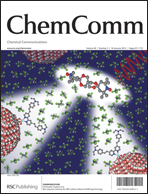Introducing chemiluminescence resonance energy transfer into immunoassay in a microfluidic format for an improved assay sensitivity†
Abstract
We report on a novel strategy to improve microfluidic immunoassay sensitivity by introducing chemiluminescence


 Please wait while we load your content...
Please wait while we load your content...